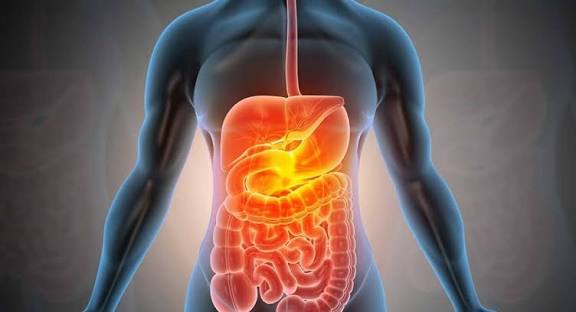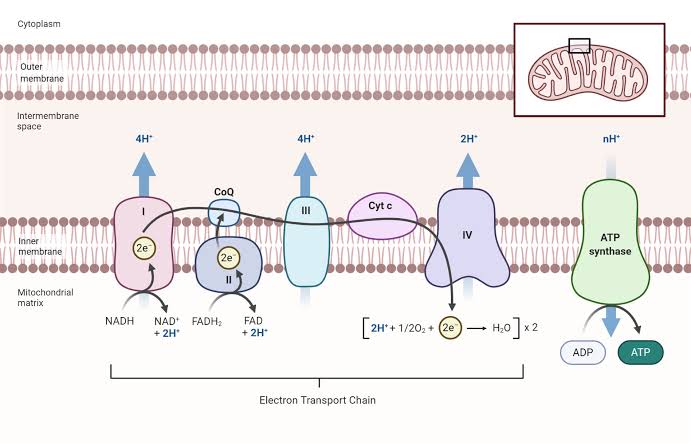
PCR-SSCP: An Overview
Polymerase Chain Reaction-Single Strand Conformation Polymorphism (PCR-SSCP) is a molecular biology technique used primarily for the detection of genetic mutations. This method leverages the principles of polymerase chain reaction (PCR) to amplify specific DNA sequences, followed by an analysis of the conformational changes in single-stranded DNA (ssDNA). The SSCP technique is particularly valuable in identifying variations in DNA sequences that may be associated with genetic diseases.
Principles of PCR-SSCP
The core principle behind PCR-SSCP involves amplifying a target region of DNA using PCR, which generates numerous copies of a specific segment. Once amplified, the double-stranded DNA is denatured into single strands. These ssDNA molecules are then subjected to electrophoresis on polyacrylamide gels. The unique conformations adopted by these ssDNA molecules during electrophoresis can differ based on their nucleotide sequence. Variations in sequence can lead to differences in how the strands fold and migrate through the gel, allowing for the identification of mutations.
Applications in Genetic Analysis
PCR-SSCP has been widely applied in various fields, particularly in genetic disease research. It is notably effective for detecting mutations related to conditions such as beta-thalassemia and cystic fibrosis. In clinical settings, this method can be used not only for diagnosing patients but also for screening carriers within populations. The ability to identify mutations quickly and reliably makes PCR-SSCP a preferred choice among geneticists and researchers.
Methodology
- Sample Preparation: The process begins with extracting DNA from biological samples, such as blood or tissue.
- PCR Amplification: Specific primers are designed to amplify regions of interest within the genome.
- Denaturation: The double-stranded PCR products are heated to separate them into single strands.
- Electrophoresis: The ssDNA is loaded onto a polyacrylamide gel and subjected to electrophoresis under non-denaturing conditions.
- Visualization: After electrophoresis, the gel is stained (often using silver staining or ethidium bromide) to visualize the bands corresponding to different conformations of ssDNA.
Advantages and Limitations
One significant advantage of PCR-SSCP is its sensitivity; it can detect even small mutations due to its reliance on conformational differences rather than sequence differences alone. Additionally, it does not require radioactive materials, making it safer and more accessible for routine laboratory use.
However, there are limitations associated with this technique. For instance, while PCR-SSCP can identify mutations effectively, it does not provide information about the specific nature of those mutations without further sequencing analysis. Moreover, certain types of mutations may not produce detectable changes in conformation, leading to false negatives.
Recent Developments
Recent advancements have focused on improving the sensitivity and specificity of PCR-SSCP through modifications such as capillary electrophoresis techniques and enhanced staining methods. These developments aim to streamline workflows and increase throughput in mutation detection.
In summary, PCR-SSCP is a powerful tool for detecting genetic mutations, particularly useful in clinical diagnostics and population screening for inherited diseases.
Overview of PCR-DGGE
Polymerase Chain Reaction Denaturing Gradient Gel Electrophoresis (PCR-DGGE) is a molecular biology technique that combines the amplification of DNA through PCR with the separation of DNA fragments based on their sequence variations using denaturing gradient gel electrophoresis. This method is particularly useful for analyzing complex microbial communities and determining genetic diversity within these populations.
Principle of PCR-DGGE
The core principle behind PCR-DGGE involves two main steps: amplification and separation.
- Amplification: The first step utilizes PCR to amplify specific regions of DNA, typically targeting genes such as the 16S rRNA gene in bacteria. This amplification is achieved using primers that are specific to the target sequences. The result is a large quantity of DNA fragments that can be analyzed further.
- Separation: After amplification, the DNA fragments are subjected to DGGE, where they are loaded onto a gel that contains a gradient of denaturants (such as urea or formamide). As the DNA migrates through the gel, it encounters increasing concentrations of these denaturants, which cause double-stranded DNA to denature into single strands at different rates depending on their sequence composition. This results in distinct banding patterns on the gel, allowing for differentiation between similar sequences based on their melting behavior.
Applications of PCR-DGGE
PCR-DGGE has several applications across various fields:
- Microbial Ecology: It allows researchers to study microbial diversity in environmental samples without prior knowledge of the organisms present. This is crucial for understanding ecosystem dynamics and responses to environmental changes.
- Clinical Diagnostics: In medical microbiology, PCR-DGGE can be employed to identify pathogens in clinical samples rapidly, which is essential for timely treatment decisions.
- Genetic Research: Researchers use this technique to analyze genetic variations within populations, including studies on clonal expansions in T-cell populations relevant to diseases like cancer and autoimmune disorders.
Advantages of PCR-DGGE
The advantages of using PCR-DGGE include:
- Sensitivity and Specificity: The method can detect low-abundance species within complex mixtures due to its high sensitivity.
- Rapid Results: Compared to traditional culture methods, which can take weeks, PCR-DGGE provides quicker insights into microbial community structures.
- Visual Profiling: The resulting band patterns allow for easy visualization and comparison between samples, facilitating ecological assessments and monitoring changes over time.
Limitations of PCR-DGGE
Despite its advantages, there are limitations:
- Interpretation Complexity: The presence of multiple bands can complicate data interpretation since they may arise from artifacts or overlapping sequences.
- Quantitative Limitations: While qualitative data regarding diversity can be obtained, quantifying exact abundances from band intensities can be challenging.
In summary, PCR-DGGE is a powerful tool for analyzing genetic diversity and community structure in various biological contexts. Its ability to provide rapid insights into complex microbial ecosystems makes it invaluable in both research and clinical settings.
PCR-HAPLOTYPES
Introduction to PCR and Haplotype Analysis
Polymerase Chain Reaction (PCR) is a widely used technique in molecular biology that allows for the amplification of specific DNA sequences. This method is crucial for various applications, including genetic testing, cloning, and sequencing. Haplotype analysis involves studying combinations of alleles at multiple loci on the same chromosome, which can provide insights into genetic diversity, population genetics, and disease associations.
Understanding Haplotype Formation
Haplotypes are formed by the combination of alleles from adjacent loci inherited together. For example, if we consider two single nucleotide polymorphisms (SNPs), each with two possible alleles (A/T and G/C), an individual can have several combinations of these alleles. When both loci are heterozygous (having different alleles at both loci), determining the haplotype becomes complex because multiple combinations are possible. In such cases, additional methods are required to resolve these ambiguities.
Challenges in Haplotype Analysis
Traditional methods for haplotype analysis can be labor-intensive and expensive. Techniques like cloning or allele-specific PCR (AS-PCR) may not be efficient for all scenarios, especially when dealing with adjacent heterozygous SNPs. The challenge lies in accurately determining the haplotypes without extensive resources or complicated procedures.
Recent Advances in PCR-Haplotype Analysis
Recent advancements have introduced more streamlined approaches to haplotype analysis using PCR products. One effective strategy involves using specific primers designed to amplify regions containing adjacent heterozygous loci. This method can utilize Sanger sequencing with allele-specific primers or pyrosequencing with dideoxyribonucleoside triphosphate (ddNTP)-blocked primers.
- Sanger Sequencing with Allele-Specific Primers: This method allows for the direct sequencing of PCR products from individuals who are heterozygous at both loci. By designing primers that specifically bind to one allele or another, researchers can effectively determine which alleles are present in a given sample.
- Pyrosequencing with ddNTP-Blocked Primers: In cases where Sanger sequencing does not yield conclusive results, pyrosequencing offers a robust alternative. By blocking certain primer extensions using ddNTPs, researchers can selectively analyze specific haplotypes even when faced with complex mixtures of DNA.
Applications of PCR-Haplotype Analysis
The ability to accurately determine haplotypes has significant implications in clinical genetics and personalized medicine. For instance, understanding the haplotypes associated with diseases such as Gilbert’s syndrome or Parkinson’s disease can help identify genetic predispositions and inform treatment strategies.
Moreover, this technology holds promise for enhancing our understanding of human evolution and population genetics by revealing how different genetic variants interact within populations over time.
Conclusion
In summary, PCR-haplotype analysis represents a significant advancement in genetic research methodologies. By employing innovative sequencing techniques combined with targeted amplification strategies, researchers can efficiently resolve complex haplotype structures that were previously challenging to analyze.
Introduction to PCR-RFLP
Polymerase Chain Reaction followed by Restriction Fragment Length Polymorphism (PCR-RFLP) is a molecular biology technique that combines the amplification of specific DNA sequences through PCR with the analysis of those sequences using restriction enzymes. This method allows for both the detection and identification of various organisms, particularly in clinical microbiology, where it has shown promise in diagnosing infections such as neonatal sepsis.
How PCR Works
The first step in PCR involves amplifying a specific segment of DNA. This is achieved through repeated cycles of denaturation (separating the DNA strands), annealing (binding primers to the target sequence), and extension (synthesizing new DNA strands). The use of universal primers that bind to conserved regions of bacterial 16S rRNA genes enables the amplification of DNA from a wide variety of bacterial species. This is crucial for identifying pathogens that may not be easily cultured in a laboratory setting.
RFLP Analysis
Once the desired DNA segment has been amplified, RFLP analysis comes into play. In this step, the amplified DNA is digested with one or more restriction enzymes that cut the DNA at specific sequences. The resulting fragments are then separated by size using gel electrophoresis. The pattern of these fragments can reveal differences between individuals or species based on variations in their genetic sequences.
Applications in Microbiology
In clinical settings, PCR-RFLP is particularly valuable for diagnosing infections like neonatal sepsis, where traditional blood culture methods may fail due to low sensitivity or prior antibiotic treatment. For instance, studies have shown that while blood cultures may identify certain pathogens, PCR-RFLP can detect additional organisms that might be present but not culturable. This method enhances diagnostic accuracy and allows for timely treatment decisions.
Advantages of PCR-RFLP
- Sensitivity and Specificity: PCR-RFLP offers higher sensitivity compared to conventional culture methods, especially useful when dealing with small volumes of blood or when antibiotics have been administered prior to sampling.
- Rapid Turnaround Time: The combination of PCR amplification and RFLP analysis can yield results faster than traditional culture techniques, which are often time-consuming.
- Identification Capability: While standard PCR can indicate the presence of bacterial DNA, RFLP provides information about the specific types of bacteria present by analyzing fragment patterns.
Limitations
Despite its advantages, there are limitations to consider:
- Complexity: The technique requires careful optimization and validation for different organisms.
- Interpretation: Analyzing RFLP patterns can be complex and may require specialized knowledge.
- Obsolescence: With advancements in sequencing technologies, some aspects of RFLP analysis are becoming less common; however, it remains a valuable tool in many laboratories.
Conclusion
PCR-RFLP represents a significant advancement in molecular diagnostics, particularly for infectious diseases where rapid and accurate identification is critical. Its ability to detect a broad range of pathogens makes it an essential tool in modern microbiology.







